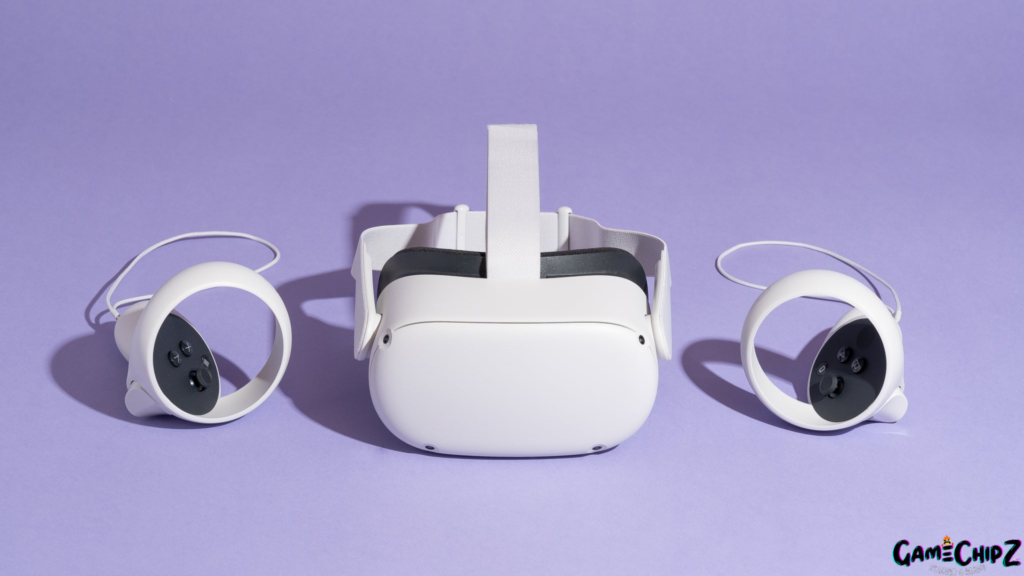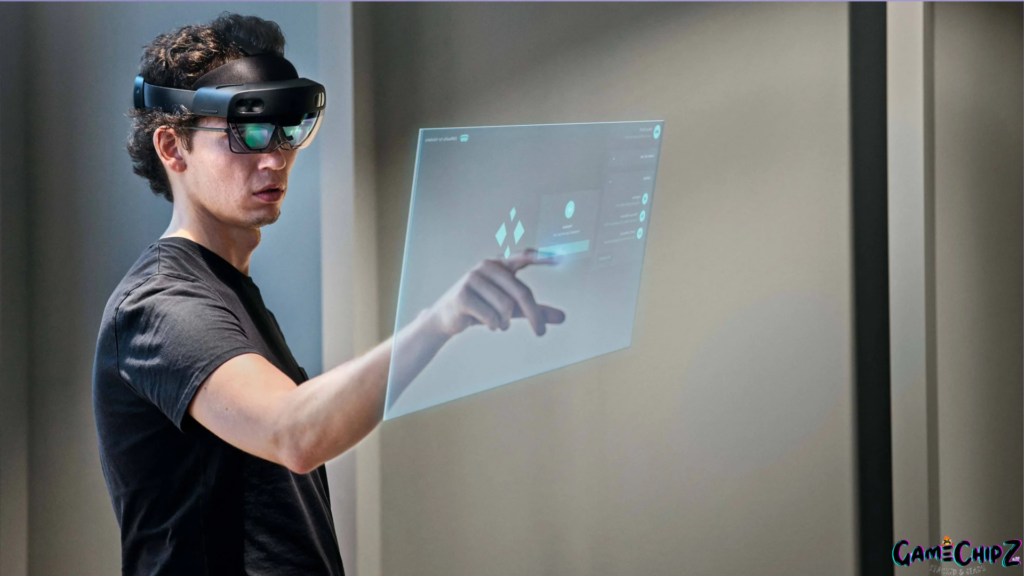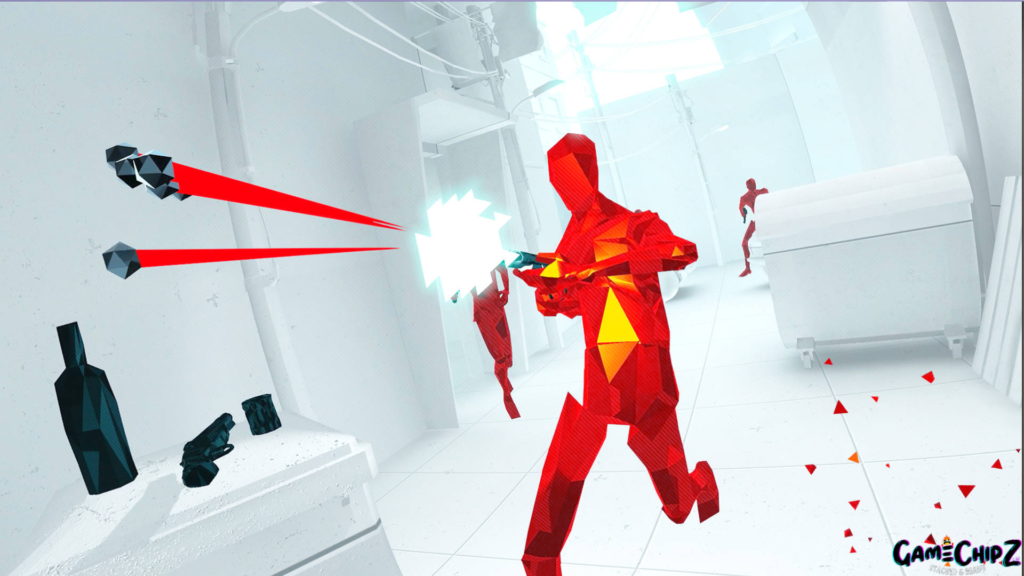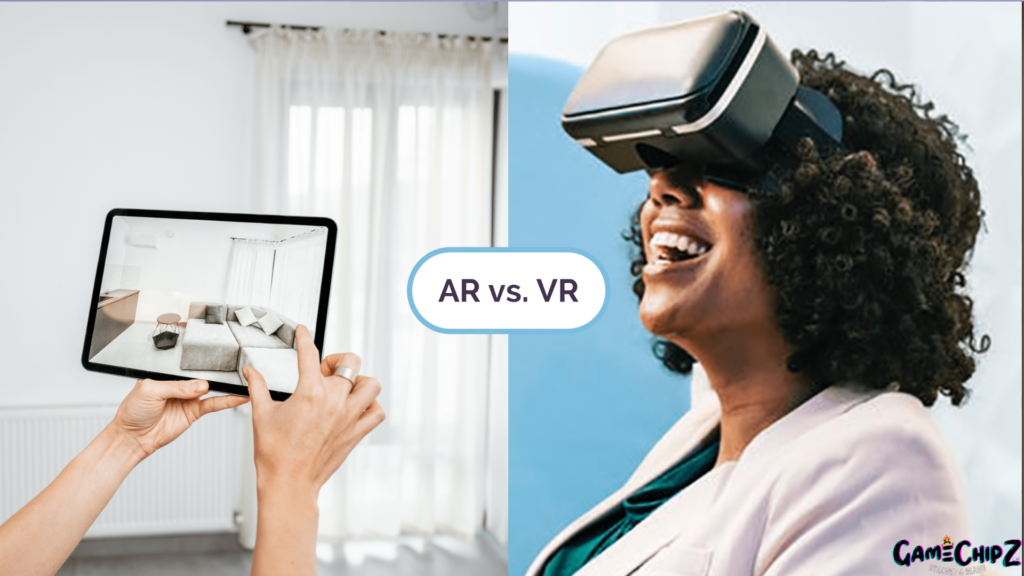Picture this: you’re standing on the edge of a cliff, gazing out over a vast alien landscape. The wind roars in your ears, your pulse quickens, and with one wrong step, you’re falling into the abyss… but then you remember you’re in your living room wearing a VR headset. Or, you’re walking through your neighborhood, hunting virtual creatures only you can see, using your phone to navigate a mixed-reality world. Welcome to the battle between Virtual Reality (VR) and Augmented Reality (AR)—two tech titans vying for the future of immersive gaming.
But which one will win the hearts (and wallets) of gamers everywhere? In this article, we’ll dive deep into the future of VR gaming, the rise of augmented reality accessories, and how the VR hand revolution is shaking things up. From heart-pounding simulations to real-world adventures, both VR and AR offer their own brand of magic. So, strap in (or strap on your headset) as we explore which technology holds the key to the next generation of gaming experiences.
Defining VR and AR: Understanding the Core Technologies

Let’s kick things off with a quick breakdown of what VR and AR actually are. Sure, they both sound futuristic, but they’re not quite the same. Think of Virtual Reality (VR) as your personal teleportation device. You slap on a headset, and BAM!—you’re in a fully immersive digital world where the real world no longer exists. Whether you’re in space battling aliens or exploring dungeons, VR creates a completely synthetic universe.
On the other hand, Augmented Reality (AR) takes a more subtle approach. Instead of whisking you away to a new realm, it blends digital elements into your existing reality. So, while you’re walking through the park, AR might toss in a dragon or two to spice things up. With AR, your world becomes a canvas for digital magic—no escape required. It’s gaming that coexists with your surroundings.
Now, both of these technologies have their own set of strengths. VR shines when it comes to total immersion, but AR’s charm lies in its ability to merge fantasy with reality. And let’s not forget the cool tech that comes with both: augmented reality accessories like smart glasses, and VR’s ever-evolving controllers, which are getting a major boost thanks to the VR hand revolution. Gamers can now interact with virtual worlds using haptic feedback, hand gestures, and more, adding layers of realism to the experience.
So, which is better? Well, that’s what we’re here to find out!
Immersion and Engagement: How Deep Do You Want to Dive?

Let’s talk immersion—because let’s face it, that’s what gaming’s all about. When you’re dodging fireballs or leading a raid, you want to feel like you’re in the game, not just pressing buttons. So, how do VR and AR stack up when it comes to pulling you into the action?
With VR, immersion is its middle name. From the moment you strap on that headset, reality goes poof. You’re instantly transported into a 360-degree world where every sight, sound, and (thanks to the VR hand revolution) touch feels real. Whether you’re navigating alien worlds, swinging lightsabers, or solving mind-bending puzzles, VR puts you front and center, making every game a deeply personal experience. You’re not just playing the game—you are the game. It’s like having the Matrix in your living room, minus the creepy red pills.
AR, on the other hand, is more like adding a sprinkle of fantasy to your day-to-day life. It’s gaming on-the-go, bringing the virtual world to you without losing touch with your surroundings. You’re not totally cut off from reality, which makes AR perfect for interactive social games and experiences that need, well, the real world to function. Think of AR as that cool friend who can crash any party, but won’t take over the whole thing.
So, what’s your vibe? Want to dive headfirst into a fully immersive world? VR’s got you covered. Prefer to keep one foot in reality while sprinkling in some magic? AR’s your go-to. Either way, you’ll find a new level of engagement in both—but for pure, all-in immersion, VR takes the crown. AR may be more grounded, but that’s part of its charm.
Hardware Requirements: What You Need to Play
Now, let’s get into the nitty-gritty: the gear. Because, let’s be honest, you can’t just dive into a virtual or augmented world without the right hardware. VR and AR come with their own sets of toys, and some of them are more budget-friendly than others. Here’s a breakdown of what you’ll need to get started with each:
Virtual Reality (VR) Hardware:

- VR Headset: The heart and soul of VR gaming. Popular choices include the Oculus Quest 2, PlayStation VR, and Valve Index. These headsets completely cover your vision, immersing you in a 3D world.
- Controllers: Standard issue for most VR setups. These handheld devices let you interact with the virtual environment. With the rise of the VR hand revolution, new controllers like haptic gloves are becoming more common, giving you a more tactile experience.
- PC or Console: High-end VR setups often require a powerful PC or gaming console to handle the intense graphics and processing power needed to keep your virtual world running smoothly. (Oculus Quest is a notable exception since it can work standalone.)
- Optional Accessories: Feeling extra fancy? Add-on accessories like external sensors, treadmill-like platforms for full-body movement, and even haptic suits can take immersion to another level.
Augmented Reality (AR) Hardware:

- Smartphone or Tablet: The beauty of AR? You probably already have the key to unlocking it. Most AR experiences rely on your smartphone or tablet’s camera to project digital elements into your real world. Popular examples include games like Pokémon GO.
- AR Glasses: For a more advanced experience, you’ve got augmented reality accessories like AR glasses (think Google Glass or Microsoft HoloLens). These nifty gadgets allow you to see digital overlays without needing to hold up your phone.
- Optional Accessories: AR controllers and sensors are less common but starting to pop up. As the tech advances, expect more options for hands-free interactions, like gesture-based controls.
Cost Comparison:
- VR: While standalone headsets like Oculus Quest 2 are affordable, full VR setups can be expensive, especially with high-end PCs and extra accessories.
- AR: AR is generally cheaper to get into, especially if you’re using a smartphone. High-end AR glasses are still pricey, but you won’t need a beastly PC to run them.
Whether you’re ready to invest in top-tier VR gear or want to dip your toes into AR with your phone, the choice of hardware will depend on how immersive you want your experience—and how much you’re willing to spend.
Gaming Experiences: Which Platform Delivers the Most Fun?
Now for the fun part—what kind of games can you actually play on VR and AR? Both platforms offer mind-blowing experiences, but the flavor of fun you get from each is pretty different. Let’s break it down:
VR Gaming Experiences:

- Simulations & Explorations: VR shines brightest when it comes to creating hyper-realistic simulations. Want to fly a spaceship? Try Elite Dangerous. Ever dreamed of being a gladiator? Blade & Sorcery has you covered. VR’s full-body immersion makes these adventures feel all too real.
- Action & Combat: In VR, you’re not just watching a fight; you’re in the fight. Games like Beat Saber and Superhot VR put your reflexes to the test. With the help of the VR hand revolution, combat in these games feels smooth, intense, and—honestly—addicting.
- Puzzle & Escape Rooms: Love solving puzzles? VR takes it to a whole new level. Games like I Expect You To Die and The Room VR combine immersive environments with brain-teasing challenges, giving you a true escape room experience without leaving your house.
- Social & Multiplayer: Want to hang out with friends in a virtual world? VR has a growing number of social games like VRChat and Rec Room, where you can team up with buddies or meet new people from around the globe, all while dressed as a virtual avatar.
AR Gaming Experiences:
- Mobile & Location-Based Games: AR thrives in mobile gaming, especially with location-based games like Pokémon GO and Ingress. These games blend reality with fantasy, turning your everyday surroundings into a playground for adventure. The key here is movement—AR makes you get out there and explore the real world.
- Puzzle & Strategy: AR loves brainy games that require you to think and interact with your environment. Take The Machines, for example, where you place a digital battlefield on your living room table and command troops in real-time.
- Interactive Social Games: AR games like Harry Potter: Wizards Unite add a social layer by letting you join forces with friends to battle enemies or complete challenges. It’s about blending the virtual with the physical world, making multiplayer experiences more connected to real-life locations.
Solo vs. Social Gameplay:
- VR: Most VR experiences are solo by nature, but the rise of social VR games is bridging the gap. You’ll still feel like you’re off in your own world, though, even when playing with friends.
- AR: AR, on the other hand, thrives in social spaces. Whether you’re teaming up with friends in the same room or competing against strangers across the globe, AR keeps you grounded in reality, which makes for a more shared experience.
In the end, it’s all about what you’re looking for. Want to fully escape reality? VR’s got your back with its wide range of immersive experiences. Prefer to mix gaming with real-world interactions? AR is the master of blending fantasy with everyday life. Both platforms are pushing the boundaries of how we play, offering something for every type of gamer.
Market Trends: VR and AR’s Role in the Gaming Industry Today

So, where do VR and AR stand in the gaming industry right now? Spoiler alert: both are growing fast, but in different ways. While VR is all about creating entirely new worlds, AR is sneaking its way into your everyday life. Let’s take a look at the trends shaping these immersive experiences:
Current Adoption Rates:
- VR: The future of VR gaming is looking bright as headsets become more affordable and accessible. The Oculus Quest 2 has been a game-changer, bringing high-quality VR to the masses without the need for a powerful PC or console. Sales of VR headsets have surged, with millions of units flying off the shelves. Gamers are finally starting to embrace VR as more than just a gimmick—it’s becoming a staple for many serious players.
- AR: On the AR front, adoption is more widespread than you might think, thanks to the fact that anyone with a smartphone can get into the action. Games like Pokémon GO continue to dominate, with millions of active users every day. AR’s true potential is still in its infancy, but mobile gaming and augmented reality accessories like AR glasses are slowly expanding its reach.
Investment and Innovation:
- VR: Major tech companies like Facebook (Meta), Sony, and Valve are pouring billions into VR research and development. The race is on to create lighter, more comfortable headsets with better resolution and tracking. The VR hand revolution is also picking up speed, with companies focusing on improving haptic feedback and natural hand movements. This tech could turn VR into the most immersive gaming platform ever.
- AR: AR is seeing huge investment too, particularly from companies like Apple, Google, and Microsoft. With devices like the HoloLens and rumors swirling about Apple’s upcoming AR glasses, it’s clear that the future of AR is going to be more integrated into our daily lives. For gaming, that means more sophisticated AR apps, games, and augmented reality accessories that blend even more seamlessly with our surroundings.
Indie Developers and Niche Games:
- VR: While AAA studios are slowly warming up to VR, indie developers are leading the charge. Games like Job Simulator, Moss, and Boneworks have shown that you don’t need a massive budget to create mind-blowing VR experiences. Indie devs are experimenting with everything from VR rhythm games to immersive horror, proving that this platform is perfect for innovation.
- AR: Indie developers in AR tend to focus on mobile games, creating unique experiences that blend gaming with real-world exploration. Pikmin Bloom is one example, where players can go for a walk in the park while engaging with the game. These types of experiences are turning everyday activities into interactive adventures, which could open the door to new genres of gaming in the future.
Adoption Challenges:
- VR: Although VR is gaining momentum, it’s still not quite mainstream. High-end headsets and PCs are still a bit pricey, and some players are hesitant due to motion sickness or the bulky nature of current gear. However, as technology improves, these barriers are expected to shrink.
- AR: AR’s biggest challenge is breaking out of its current role in mobile games. While it’s great for short, casual gaming sessions, more immersive experiences (the kind that AR glasses promise) are still a few years away. But once augmented reality accessories become more common, we might see AR take off in a big way.
Future Outlook: What’s Next for VR and AR Gaming?
As we gaze into our crystal ball (or just follow the latest tech news), the future of VR and AR gaming is bursting with potential. Both technologies are poised to evolve in exciting ways, so let’s look ahead to see what might be coming down the pipeline:
Technological Advancements:
- VR: The next generation of VR is likely to be wireless, more comfortable, and even more immersive. Companies are working on improving resolution and field of view, making VR experiences look and feel more lifelike. Expect to see advancements like lighter headsets, better motion tracking, and more sophisticated VR hand revolution technology that offers precise and realistic interactions.
- AR: AR is gearing up for a breakthrough with the development of augmented reality accessories like next-gen smart glasses. These devices will allow for a more seamless blend of digital and physical worlds, enabling complex AR experiences without needing to hold up a smartphone. Think of augmented reality that’s as easy to use as a pair of regular glasses.
Emerging Applications:
- VR: Beyond gaming, VR is expanding into areas like virtual tourism, online education, and remote work. Imagine attending a live concert or a conference from the comfort of your home, or collaborating with colleagues in a virtual workspace that feels almost like the real thing. VR is setting the stage for a new era of digital interaction.
- AR: AR is already enhancing everyday tasks with applications in navigation, shopping, and social media. Future AR experiences might include everything from interactive fitness workouts that guide you through exercises in your living room to educational apps that overlay useful information onto real-world objects.
Potential Challenges:
- VR: As VR technology advances, one challenge will be ensuring accessibility and affordability for a wider audience. High-end VR setups are still quite pricey, and issues like motion sickness need ongoing attention to make the technology enjoyable for everyone.
- AR: AR faces the challenge of integrating seamlessly into daily life. While the technology is promising, making AR glasses stylish, functional, and affordable will be key to widespread adoption. Additionally, privacy concerns and data security will need to be addressed as AR becomes more integrated into personal spaces.
The Future of VR Gaming:
The future of VR gaming may not be about choosing one over the other but rather about how these technologies can complement each other. Imagine a world where VR is your escape into other realms and AR enhances your real-world interactions with digital elements. The lines between the two could blur, offering a richer and more diverse gaming experience.
As we dive deeper into the world of gaming, both VR and AR are carving out their own unique spaces. VR is pushing the boundaries of immersion, offering experiences that transport you to entirely new worlds, while AR is blending digital wonders with your everyday life, making the real world just a bit more magical.
The future of VR gaming looks promising, with advancements that could make virtual experiences even more immersive and accessible. Meanwhile, augmented reality accessories are on the brink of transforming how we interact with both games and the world around us, thanks to innovations like AR glasses and advanced tracking technologies.
Whether you’re a fan of escaping into virtual realms or bringing fantasy into your physical surroundings, the future of VR gaming promises exciting developments. So, whether you’re suiting up for a VR battle or hunting for Pokémon in your local park, one thing is certain: the gaming world is evolving, and the best is yet to come. Strap in (or put on your glasses) and get ready for the next chapter in immersive gaming!


